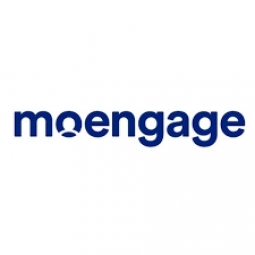Download PDF
Kredivo's Success with MoEngage: Influencing Up to 40% Conversions
Technology Category
- Platform as a Service (PaaS) - Application Development Platforms
Applicable Industries
- Retail
- Transportation
Applicable Functions
- Logistics & Transportation
- Sales & Marketing
Use Cases
- Last Mile Delivery
- Retail Store Automation
The Challenge
Kredivo, a rapidly growing digital payment channel for ecommerce in Indonesia, was facing three main challenges. Firstly, they were struggling to engage new users who had downloaded the Kredivo app. Secondly, they were looking for ways to enable users to complete transactions within the app. Lastly, they were exploring how they could leverage their existing app users to boost overall brand and App store SEO. These challenges were critical to their growth and customer retention strategy, and they needed a comprehensive solution that could address all these issues effectively.
About The Customer
Kredivo is a digital payment platform that enables ecommerce buyers to apply and qualify for instant credit and pay back over time. Merchants using Kredivo benefit from providing Point of Sale financing using a 2-click checkout to all eligible buyers. In less than 3 years since its launch, Kredivo has become one of the fastest-growing and the stickiest digital payment channels for ecommerce in Indonesia. They were looking for ways to engage new users, enable users to complete transactions within the app, and leverage existing app users to boost overall brand and App store SEO.
The Solution
Kredivo decided to use MoEngage, a single marketing automation platform, to address their app user engagement challenges. MoEngage’s Push Amplification SDK was used to track notifications that were sent and acted as a fallback to GCM for delivering notifications to devices with failed delivery. This helped in improving the delivery of push notifications. To influence conversions, Kredivo sent custom offers via emails and push notifications to users who had approved instalments, encouraging them to purchase new products within the app. Unique flows were set up based on user attributes such as age, gender, income, etc., to customize the offers and messages sent to users at a segment level. Additionally, automated emails were sent to users who had completed in-app transactions, seeking Play Store and App Store ratings and feedback.
Operational Impact
Quantitative Benefit
Related Case Studies.

Case Study
Airport SCADA Systems Improve Service Levels
Modern airports are one of the busiest environments on Earth and rely on process automation equipment to ensure service operators achieve their KPIs. Increasingly airport SCADA systems are being used to control all aspects of the operation and associated facilities. This is because unplanned system downtime can cost dearly, both in terms of reduced revenues and the associated loss of customer satisfaction due to inevitable travel inconvenience and disruption.

Case Study
IoT-based Fleet Intelligence Innovation
Speed to market is precious for DRVR, a rapidly growing start-up company. With a business model dependent on reliable mobile data, managers were spending their lives trying to negotiate data roaming deals with mobile network operators in different countries. And, even then, service quality was a constant concern.

Case Study
Digitize Railway with Deutsche Bahn
To reduce maintenance costs and delay-causing failures for Deutsche Bahn. They need manual measurements by a position measurement system based on custom-made MEMS sensor clusters, which allow autonomous and continuous monitoring with wireless data transmission and long battery. They were looking for data pre-processing solution in the sensor and machine learning algorithms in the cloud so as to detect critical wear.

Case Study
Cold Chain Transportation and Refrigerated Fleet Management System
1) Create a digital connected transportation solution to retrofit cold chain trailers with real-time tracking and controls. 2) Prevent multi-million dollar losses due to theft or spoilage. 3) Deliver a digital chain-of-custody solution for door to door load monitoring and security. 4) Provide a trusted multi-fleet solution in a single application with granular data and access controls.

Case Study
Improving Production Line Efficiency with Ethernet Micro RTU Controller
Moxa was asked to provide a connectivity solution for one of the world's leading cosmetics companies. This multinational corporation, with retail presence in 130 countries, 23 global braches, and over 66,000 employees, sought to improve the efficiency of their production process by migrating from manual monitoring to an automatic productivity monitoring system. The production line was being monitored by ABB Real-TPI, a factory information system that offers data collection and analysis to improve plant efficiency. Due to software limitations, the customer needed an OPC server and a corresponding I/O solution to collect data from additional sensor devices for the Real-TPI system. The goal is to enable the factory information system to more thoroughly collect data from every corner of the production line. This will improve its ability to measure Overall Equipment Effectiveness (OEE) and translate into increased production efficiencies. System Requirements • Instant status updates while still consuming minimal bandwidth to relieve strain on limited factory networks • Interoperable with ABB Real-TPI • Small form factor appropriate for deployment where space is scarce • Remote software management and configuration to simplify operations






